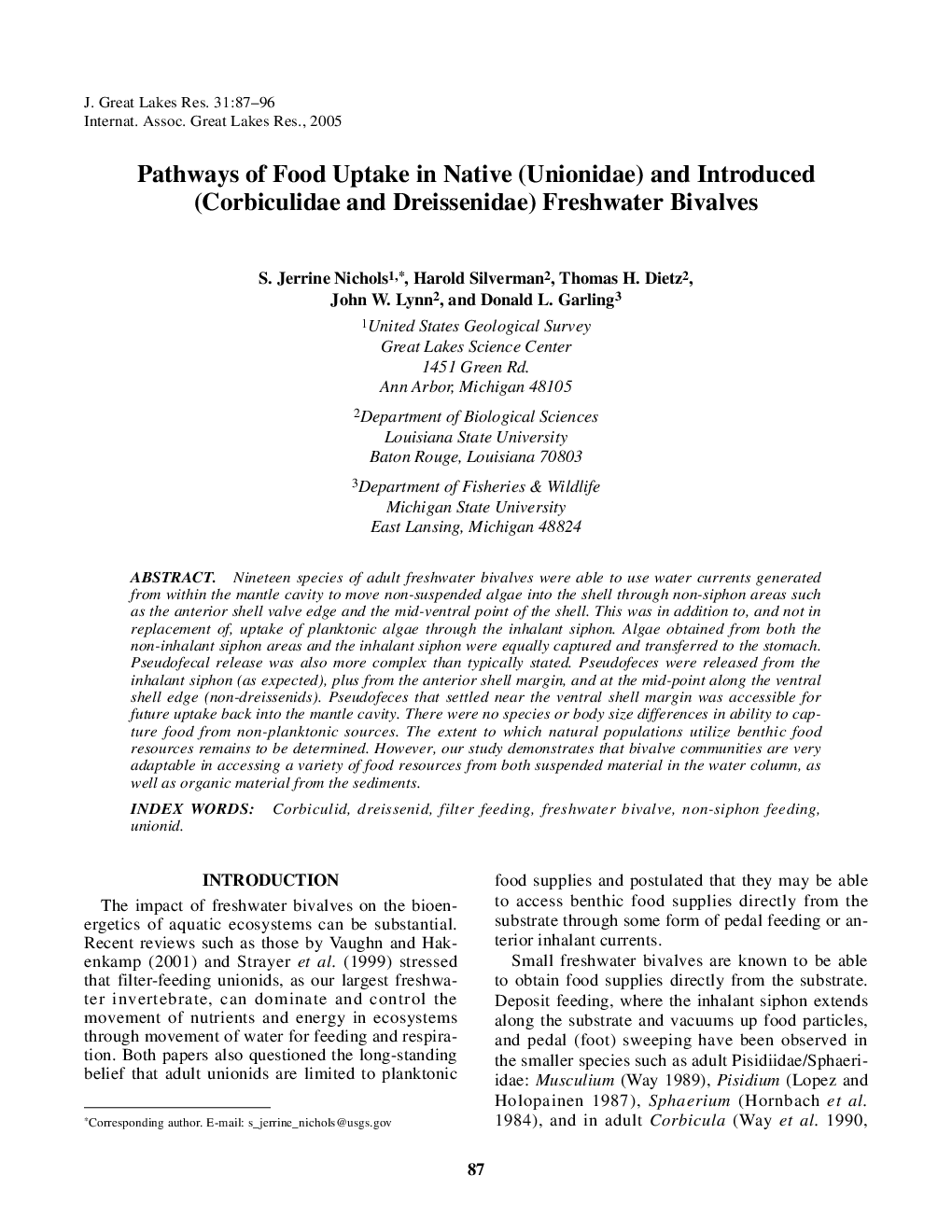| Article ID | Journal | Published Year | Pages | File Type |
|---|---|---|---|---|
| 9450210 | Journal of Great Lakes Research | 2005 | 10 Pages |
Abstract
Nineteen species of adult freshwater bivalves were able to use water currents generated from within the mantle cavity to move non-suspended algae into the shell through non-siphon areas such as the anterior shell valve edge and the mid-ventral point of the shell. This was in addition to, and not in replacement of, uptake of planktonic algae through the inhalant siphon. Algae obtained from both the non-inhalant siphon areas and the inhalant siphon were equally captured and transferred to the stomach. Pseudofecal release was also more complex than typically stated. Pseudofeces were released from the inhalant siphon (as expected), plus from the anterior shell margin, and at the mid-point along the ventral shell edge (non-dreissenids). Pseudofeces that settled near the ventral shell margin was accessible for future uptake back into the mantle cavity. There were no species or body size differences in ability to capture food from non-planktonic sources. The extent to which natural populations utilize benthic food resources remains to be determined. However, our study demonstrates that bivalve communities are very adaptable in accessing a variety of food resources from both suspended material in the water column, as well as organic material from the sediments.
Related Topics
Physical Sciences and Engineering
Earth and Planetary Sciences
Earth and Planetary Sciences (General)
Authors
S. Jerrine Nichols, Harold Silverman, Thomas H. Dietz, John W. Lynn, Donald L. Garling,
